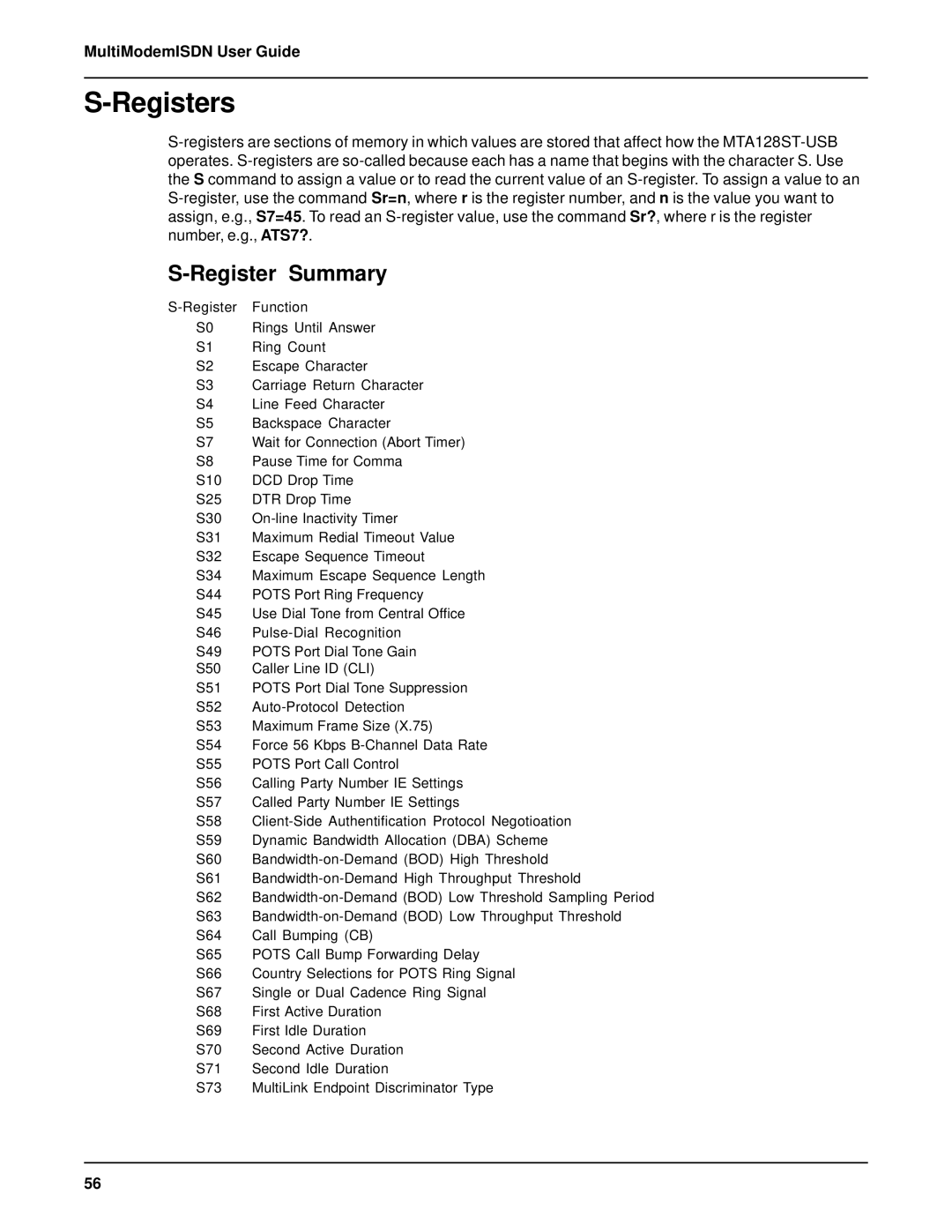
MultiModemISDN User Guide
S-Registers
S-Register Summary
Function | |
S0 | Rings Until Answer |
S1 | Ring Count |
S2 | Escape Character |
S3 | Carriage Return Character |
S4 | Line Feed Character |
S5 | Backspace Character |
S7 | Wait for Connection (Abort Timer) |
S8 | Pause Time for Comma |
S10 | DCD Drop Time |
S25 | DTR Drop Time |
S30 | |
S31 | Maximum Redial Timeout Value |
S32 | Escape Sequence Timeout |
S34 | Maximum Escape Sequence Length |
S44 | POTS Port Ring Frequency |
S45 | Use Dial Tone from Central Office |
S46 | |
S49 | POTS Port Dial Tone Gain |
S50 | Caller Line ID (CLI) |
S51 | POTS Port Dial Tone Suppression |
S52 | |
S53 | Maximum Frame Size (X.75) |
S54 | Force 56 Kbps |
S55 | POTS Port Call Control |
S56 | Calling Party Number IE Settings |
S57 | Called Party Number IE Settings |
S58 | |
S59 | Dynamic Bandwidth Allocation (DBA) Scheme |
S60 | |
S61 | |
S62 | |
S63 | |
S64 | Call Bumping (CB) |
S65 | POTS Call Bump Forwarding Delay |
S66 | Country Selections for POTS Ring Signal |
S67 | Single or Dual Cadence Ring Signal |
S68 | First Active Duration |
S69 | First Idle Duration |
S70 | Second Active Duration |
S71 | Second Idle Duration |
S73 | MultiLink Endpoint Discriminator Type |
56
